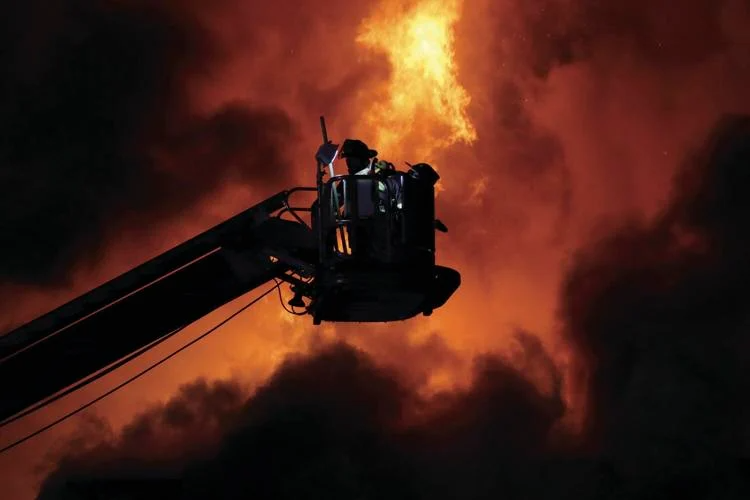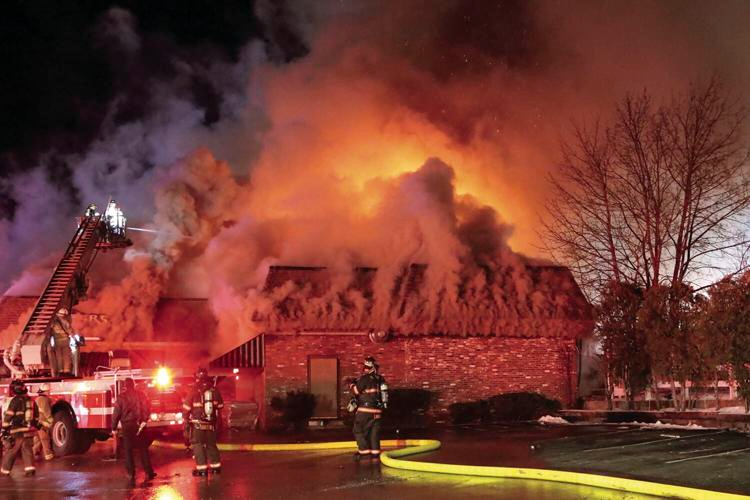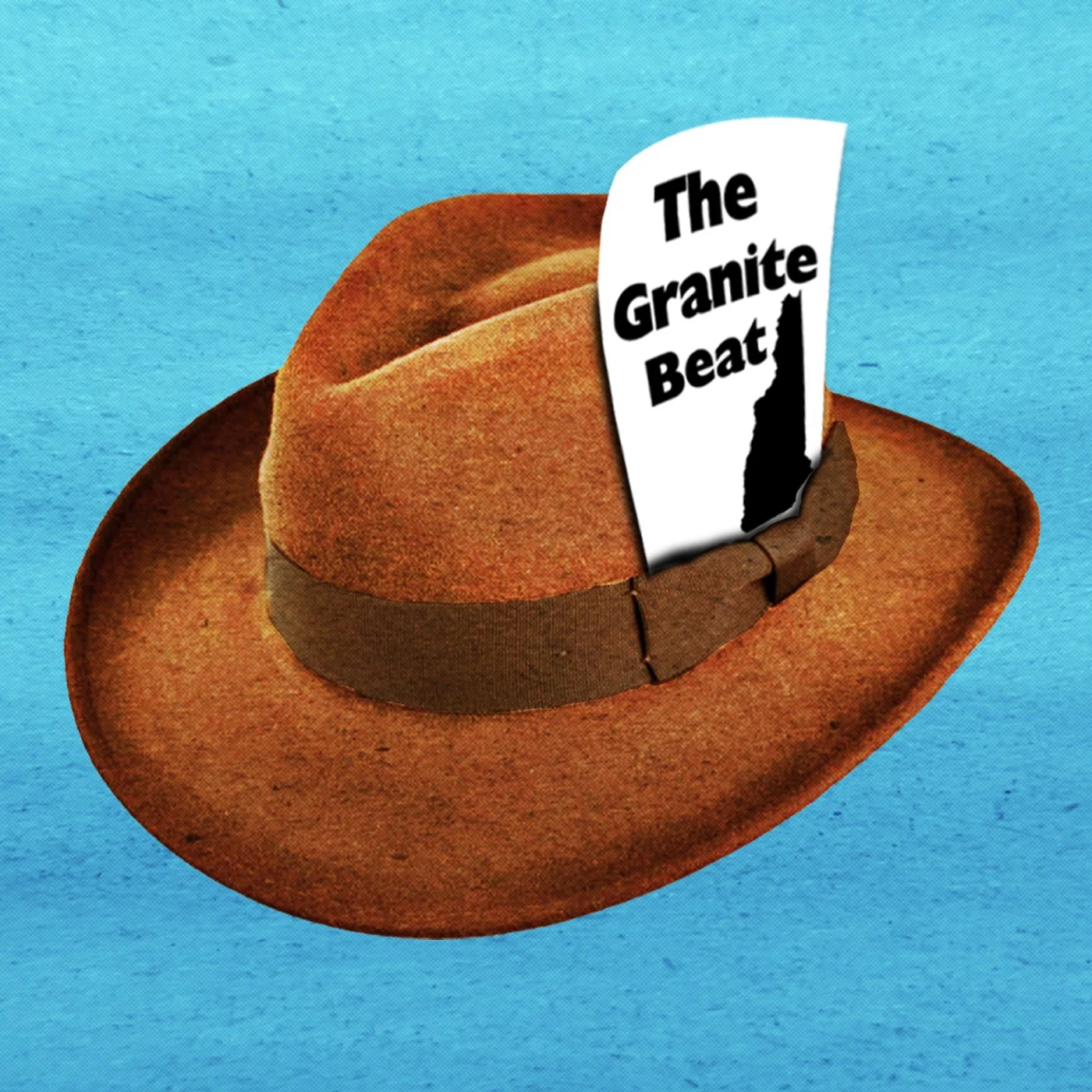Local photojournalist Gary Geoffroy talks about humanity in front of and behind the camera
By Adam Drapcho and Julie Hart, Laconia Daily Sun
Listen to the full interview on The Granite Beat podcast here and subscribe wherever you get your podcasts
A picture is only worth a thousand words if the photographer did their job right. To do that, they need to see a scene as more than just a jumble of shadows and light. A good photojournalist knows they must try to accurately tell the story of a human being’s experience in that moment in time. Whether those experiences are triumphant or tragic, the photojournalist must capture the context and humanity with each quick click of a button in order to provide information that a written article alone may just not be able to on its own. It’s not easy and the camera is not a shield. The job can take a toll.
In this week’s episode, The Granite Beat’s hosts Adam Drapcho and Julie Hart chat with seasoned photographer Gary Geoffroy, whose 40+ year career includes 12 years of freelancing in photography and videography for news outlets, most recently in the Lakes Region. Drapcho and Hart discuss with him what it’s like covering breaking, often traumatic news from behind the lens, how it compares to his decades as a firefighter, and who’s best suited for this line of work.


This transcript has been edited lightly for length and clarity.
Adam Drapcho: How would you approach your work as a freelance videographer covering breaking news? Are you just listening to a police scanner, ready to run out the door at any moment?
Gary Geoffroy: I would head out at about 9pm with all the news gathering equipment, extra batteries, a bulletproof vest - it was pretty sporty work. I would go to an area in the city that had easy access to interstates so you can get pretty much anywhere very quickly. I would just listen to the radios, get my studio worked on while I was sitting listening, and any given night you’d go to two or three different incidents. Depending on the news cycle of the day they may be something as simple as a basic rollover without any serious injuries. Or if the news cycle of the day was large, nationally, you would need something a little bigger to be able to sell. Just about every single night I sold one or two different incidents that took place - you would just travel to it, shoot the video, and go back. I was fortunate in the sense that I didn't have to edit. But I always provided the backstory to the incident and what was heard over the radio; that allowed their staff to look into the incident a bit further and they just absolutely loved that because they really hadn't had that type of information provided before - what was heard firsthand, what transpired, what was seen. You would submit it through Dropbox with no editing, and they would say yeah we're taking it. It was just literally as easy as that.
Adam Drapcho: I'd like to ask you specifically about a recent situation that you helped cover for the Laconia Daily Sun involving a police shooting in Gilford. This was something that has driven the news cycle for many days here and it's caused a lot of grief. What was it like for you as a person to provide the coverage of it?
Gary Geoffroy: I think that particular story is different for me. I know the victim's family. I had one opportunity to meet one of the two officers that were involved. Interactions with the family have always been pleasant; good, helpful people, kind. And I met the officer and he was kind, and he was helpful. I saw the dad's face that night and I saw that officer's face when he was walking out and there was pain on both of them - different levels of pain of course. One lost a son. Profound effect all the way around. Everybody involved, community included. Tough, super tough.
Adam Drapcho: Usually the kind of work you're called out for is at some level of tragedy. What is it like to see your work broadcast or published when it depicts a scene that maybe most people may be unhappy to see?
Gary Geoffroy:Nobody's happy to see this, period. For me, I hope I provided as many sides to the incident as were possible. Sometimes it's not possible to provide all the sides of what's unfolding in front of you. Sometimes it's simply the carnage, sometimes it's the human aspect to it. Ultimately, it's not the freelancer who picks the content that plays, it’s the editors. You hope your edit has a human side also, and when you get a little bit of that, the job becomes a little bit easier.
Adam Drapcho: What would you say is the right kind of person for this kind of work?
Gary Geoffroy: The freelance end of it is extremely difficult to make a living. We use freelance photographers with our business, and those are talented photographers, they’re prompt and courteous, they represent your brand well. But to come across somebody like that is a find. Somebody that's the ideal freelancer for news is either doing it to supplement their income or retired, or possibly both. When somebody provides that freelance news, you're taking the images, but you're also taking information from them. Your reputation is based on the information provided. If you have somebody that's desperate to sell or desperate for your approval, information can be embellished, and retraction is the nightmare of any news agency. That washes people out quickly. Your integrity and your own brand is as important as the brand you're providing for, and that's a hard find sometimes. The right person for it is a person who has the photography skill that's capable of understanding depth of field, F stop in relation to speed and ISO, and not somebody who sets their camera on automatic that they bought for Christmas and walks out the door, because ultimately that doesn't cover it.
Adam Drapcho: I imagine you would have gone to a lot of these scenes as a firefighter. How do they look different when you're there as a journalist as opposed to as an emergency responder?
Gary Geoffroy: You're in front of the yellow line or behind the yellow line. I do find that the New Hampshire law enforcement fire community is much more receptive to the press than they were in Rhode Island. And it doesn't mean that those departments in Rhode Island were bad. Some of them have real strict protocols where their crime scene tape is two telephone poles up and that's it. Others will let you enter the scene at a reasonable distance if they've gotten to know you over time. Locally here in the Lakes Region, if it's within reason, they're pretty easy to work with. I find departments to be very cooperative, very receptive.
This article is part of The Granite Beat, a project by The Laconia Daily Sun and The Granite State News Collaborative, of which Laconia is a partner. Each week Adam Drapcho and Julie Hart, will explore with local reporters how they got some of the most impactful stories in our state and why they matter. This project is being shared with partners in The Granite State News Collaborative.
